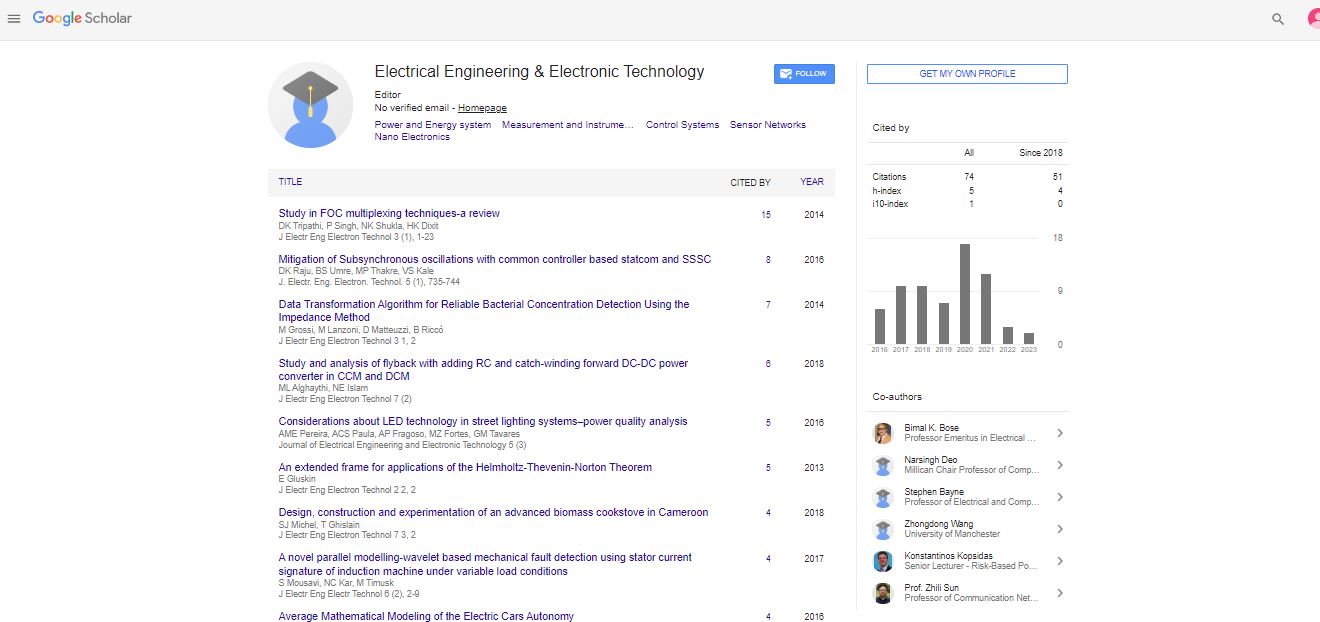From free electron laser toward the first gamma laser
Branislav Vlahovic, S Golge, S Benson and B Wojtsekhowski
North Carolina Central University, USA
Thomas Jefferson National Laboratory, USA
: J Electr Eng Electron Technol
Abstract
Over the years, it has been recognized by experts of positron community the necessity to have a slow positron source exceeding at least 109 e+/s. However, as of today, there is yet to be an existing operational facility achieving this goal. Presently, there are many table-top radioactive source-based slow e+ beams with the intensities limited up to 106 slow e+/s. Higher intensities have been reached at a linac-based facility (EPOS, Dresden, Germany with the projected intensity of 5x108 e+/s, and at two reactor-based e+ facilities (PULSTAR Reactor, NC, USA and NEPOMUC Reactor, Munich, Germany) with intensities close to 109 e+/s. Presented will be our efforts to modify Jefferson Free Electron Laser beamline that will enable achievement of more than 1011e+/s and intensity better for a factor of 10,000 than anywhere else. First, we will be taking advantage of an existing highpower high-energy C W electron linac-based beam which allows controlling the beam features with high-precision. Second, our approach will allow using novel high-efficiency Rare Gas Moderator (RGM), such as solid-Neon, which is more efficient than the ones used in existing linac- and reactor-based facilities. This high brightness could allow for new generation of experiments, including production of positronium atoms at enough high densities, more than 106 Ps/μm3, that will allow for formation of Bose Einstein condensate at relatively high temperatures (15 K), which could ultimately allow for formation of the first gamma laser.
Biography
E-mail: vlahovic@nccu.edu
 Spanish
Spanish  Chinese
Chinese  Russian
Russian  German
German  French
French  Japanese
Japanese  Portuguese
Portuguese  Hindi
Hindi 
